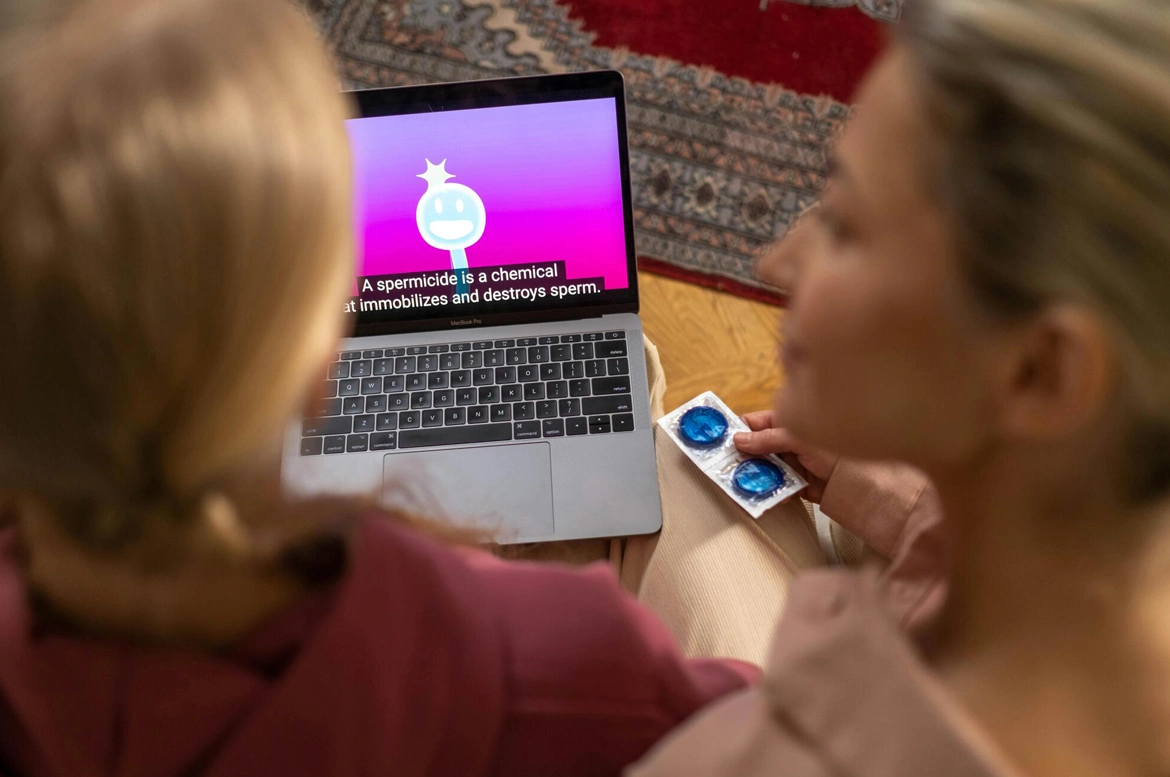So, you think you know your favorite movies and shows inside out? Here’s a twist: closed captions and subtitles, though often used interchangeably, are fundamentally different.
Surprised? Most people are.
‘Closed caption vs subtitles’ – this phrase hides a world of difference that many of us overlook. It’s not just about reading what’s being said; it’s about understanding the intent and context behind every sound and word.
This revelation might just change the way you experience media. So, let’s embark on a journey to unravel the nuances that set closed captions and subtitles apart. Read on to get the full picture.
Closed Captions: More Than Meets the Eye
Closed captions are often seen as just a helpful tool for the hearing impaired, but their impact goes far beyond that. They serve as a bridge to inclusivity, opening up the world of entertainment to a wider audience.
What makes closed captions unique isn’t just their ability to transcribe spoken words; it’s their comprehensive nature. They offer a full portrayal of a program’s audio track, not just the dialogue.
Imagine watching a scene with only dialogue captions. You’d miss out on the mood-setting background music, the tension in a character’s silent sigh, or the surprise in a sudden door slam.
Closed captions bring these elements to the forefront, offering a richer, more immersive experience. They ensure that viewers who are deaf or hard of hearing don’t miss out on these crucial aspects of storytelling.
These captions do more than just display text; they paint a picture of the auditory world. Whether it’s the soft chirping of birds in a serene scene or the ominous creak of a floorboard in a thriller, closed captions add depth and context to the viewing experience. This level of detail is vital, as it allows for a more inclusive and complete understanding of the content.
By capturing every nuance of the audio, closed captions create a more equitable viewing experience. They aren’t just a feature; they’re an essential part of making media accessible and enjoyable for all. This is the true power of closed captions: they’re an aid, but also a key to unlocking the full spectrum of the media experience for everyone.
Subtitles: Bridging Language Gaps
Subtitles have a unique role in the world of media: they bridge language barriers. Primarily, subtitles focus on translating spoken dialogue from one language to another. This feature is crucial for enjoying films, shows, or videos in a language that may not be familiar to the viewer.
For instance, imagine diving into a riveting Korean drama or an Italian classic film. Without subtitles, the nuances and beauty of these productions could be lost to those who don’t speak the language.
Unlike closed captions, subtitles usually don’t include descriptions of non-dialogue audio elements like background noise or music. Their main goal is to convey the spoken word clearly and accurately.
This focus on dialogue helps viewers who can hear but might not understand the language being spoken. By converting the spoken language into readable text in another language, subtitles provide a crucial link between different cultures and their creative works.
The impact of subtitles extends beyond just translation. They play a key role in globalizing media, making it accessible and relatable to a diverse, international audience. This accessibility not only enhances the viewing experience but also fosters a greater appreciation for different cultures and storytelling styles.
Subtitles are more than just a translation tool; they are a gateway to a world of diverse content. They allow us to explore and enjoy stories from across the globe, breaking down linguistic barriers, and enriching our understanding of the world.
Through subtitles, viewers are invited into a global community of media enthusiasts. They create a situation where language is no longer a barrier to shared experiences and perspectives.
Technology Behind the Text
The technology that powers closed captions and subtitles is a dynamic and evolving field. For closed captioning, innovations have enabled real-time captioning for live broadcasts. They are a game-changer for news programs, sports events, and live shows.
This technology allows viewers to stay in sync with live events.
Closed caption technology isn’t limited to just television. It extends to:
- Online videos
- Streaming services
- Public announcements in transport hubs
The integration of captioning in various media platforms highlights its importance in today’s interconnected world. It’s a testament to the commitment to making information and entertainment accessible to all, regardless of hearing ability.
On the other hand, advancements in video subtitles have transformed the process of adding translations to films and series. Modern software tools enable:
- Accurate and timely translation
- Syncing
- Embedding of subtitles
This technological progress has not only streamlined the subtitling process but has also improved the quality and readability of subtitles. As a result, viewers around the globe can enjoy a vast array of international content with ease.
These technological advancements are crucial for bridging the gap between different languages and cultures. They enhance our access to global media, allowing us to experience and appreciate a diverse range of stories and perspectives.
This is the power of technology in the realm of closed captions and subtitles. It brings the world closer, one subtitle and caption at a time.
Enhancing Accessibility and Understanding
Closed captions and video subtitles are vital tools in making content accessible and comprehensible to a wide array of audiences. Closed captions cater specifically to the needs of the hearing impaired by providing a complete auditory experience in text format. This includes not just the dialogue but also the subtle sounds that form an integral part of the storytelling.
For viewers who are deaf or hard of hearing, closed captions ensure that they don’t miss out on these important audio cues. They allow such people to fully engage with the media.
Subtitles, while aimed at a different audience, play an equally important role. They are designed for viewers who can hear but do not understand the language of the content.
Subtitles make foreign-language films, shows, and videos accessible to a global audience, transcending language barriers. They open up a world of content that would otherwise be inaccessible. Subtitles enable viewers to explore and appreciate stories from different cultures.
Both closed captions and subtitles are more than just on-screen text; they are tools of inclusivity and understanding. They allow people from various linguistic and auditory backgrounds to share in the experience of media.
By enhancing accessibility, closed captions and subtitles not only broaden our entertainment choices but also promote cultural exchange and understanding. They play a crucial role in ensuring that everyone, regardless of language or hearing ability, has access to the rich and diverse world of media.
The Cultural Impact of On-Screen Text
The presence of closed captions and subtitles has a profound cultural impact. This impact extends beyond mere accessibility.
Closed captions have democratized media consumption for the deaf and hard-of-hearing communities, allowing them to participate fully in a cultural experience that many take for granted. This inclusivity fosters a greater sense of community and belonging.
Subtitles, meanwhile, have played a pivotal role in the cross-cultural exchange of ideas and stories. They have enabled the rise of international cinema and television in mainstream media. Audiences can now experience and appreciate the richness of different cultures and languages.
This exposure to diverse narratives and perspectives has broadened viewers’ horizons. It promotes empathy and understanding across cultural boundaries.
Future Trends in Closed Captions and Subtitles
Looking ahead, the future of closed captions and subtitles is likely to be shaped by ongoing technological advancements and increasing global interconnectedness. Emerging technologies like AI and machine learning are set to further enhance the accuracy and speed of real-time captioning and subtitling. This will not only improve the viewer’s experience but also make content more accessible and inclusive.
Additionally, the growing demand for diverse and international content will continue to drive the evolution of subtitles, potentially leading to more innovative ways of bridging language barriers. As media consumption becomes more globalized, closed captions and subtitles will play an increasingly crucial role in connecting audiences around the world, making every story accessible to everyone.
The Closed Caption vs Subtitles Debate
As we reflect on the closed caption vs subtitles debate, it becomes clear that both are essential in their own right. They play distinct yet complementary roles in enhancing our media experiences.
Closed captions offer a window into the complete auditory landscape for the hearing impaired. Subtitles deliver the diversity and inclusivity that is vital in today’s global media landscape.
Since we started Talking Type Captions in 2003, we’ve been dedicated to providing top-tier closed captioning, subtitling, and script services to the biggest names in the film and television industry. We started with managing 30 minutes of closed captioning a month, and now we handle up to 10 hours a day, along with producing 2 hours of CCSL daily!
Looking for unparalleled closed captioning and subtitling services? Talk to us at Talking Type Captions, where our attention to detail and commitment to quality have been constant from day one.




